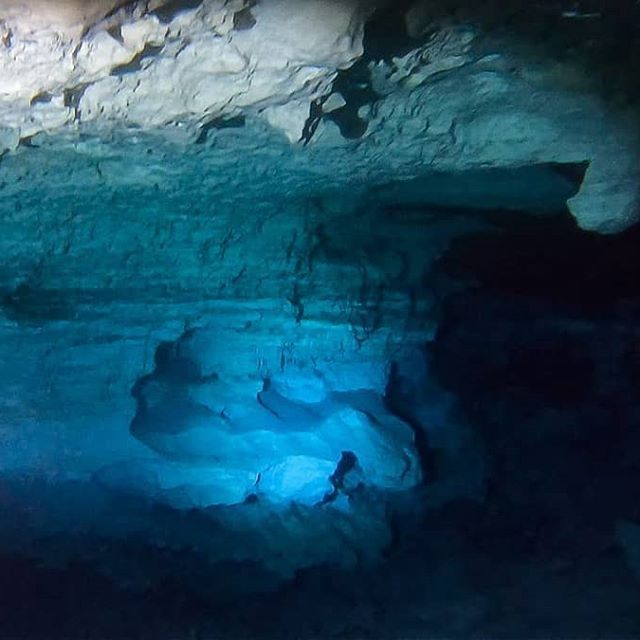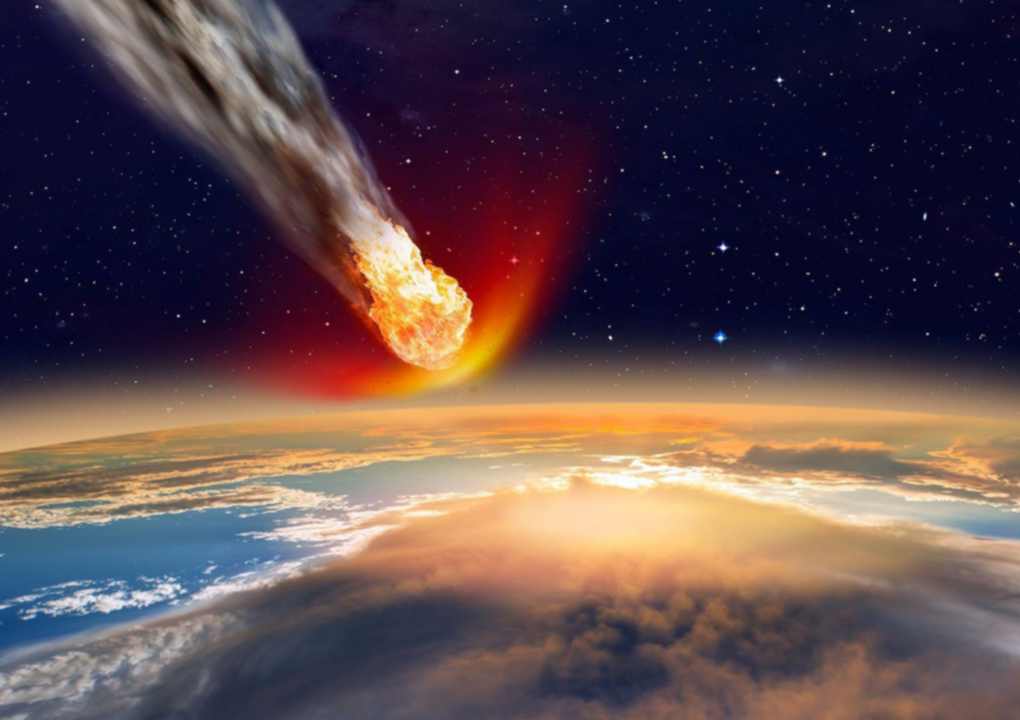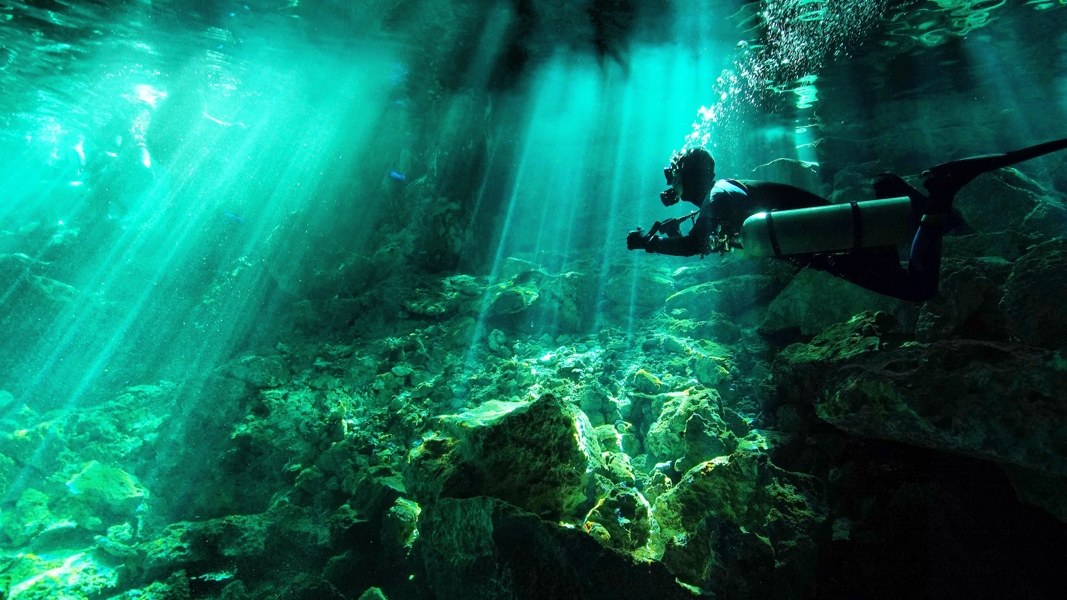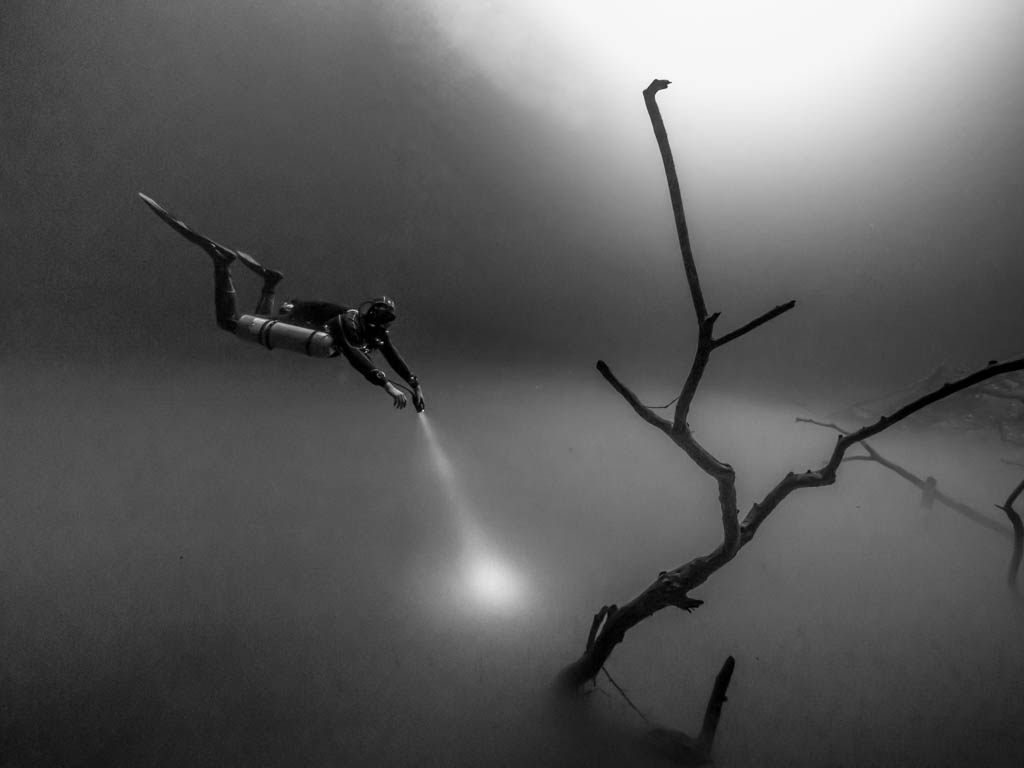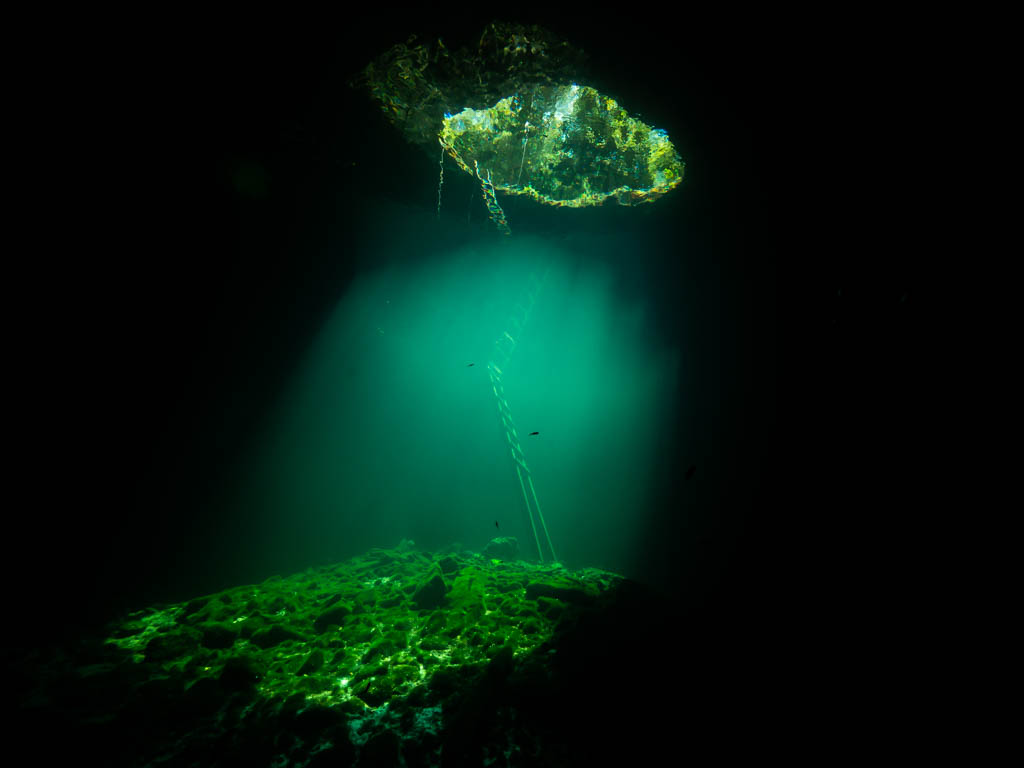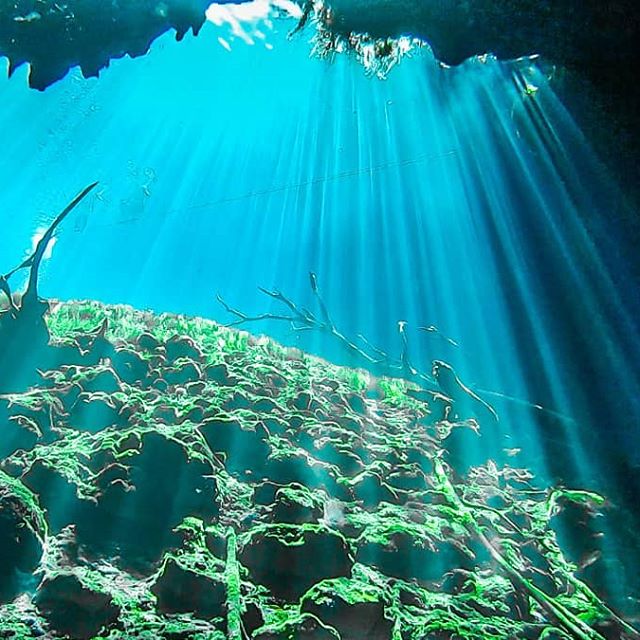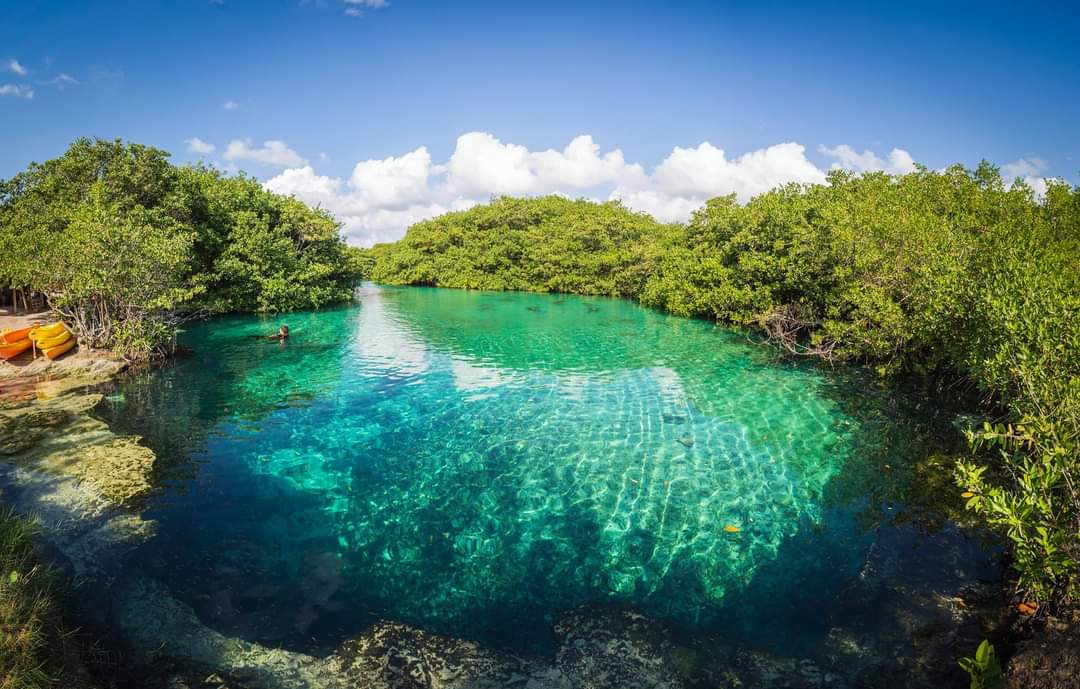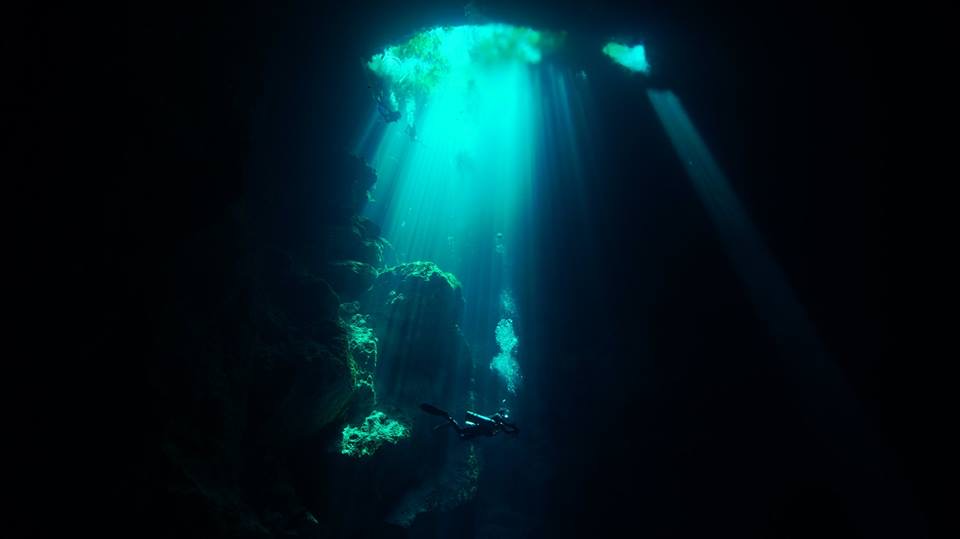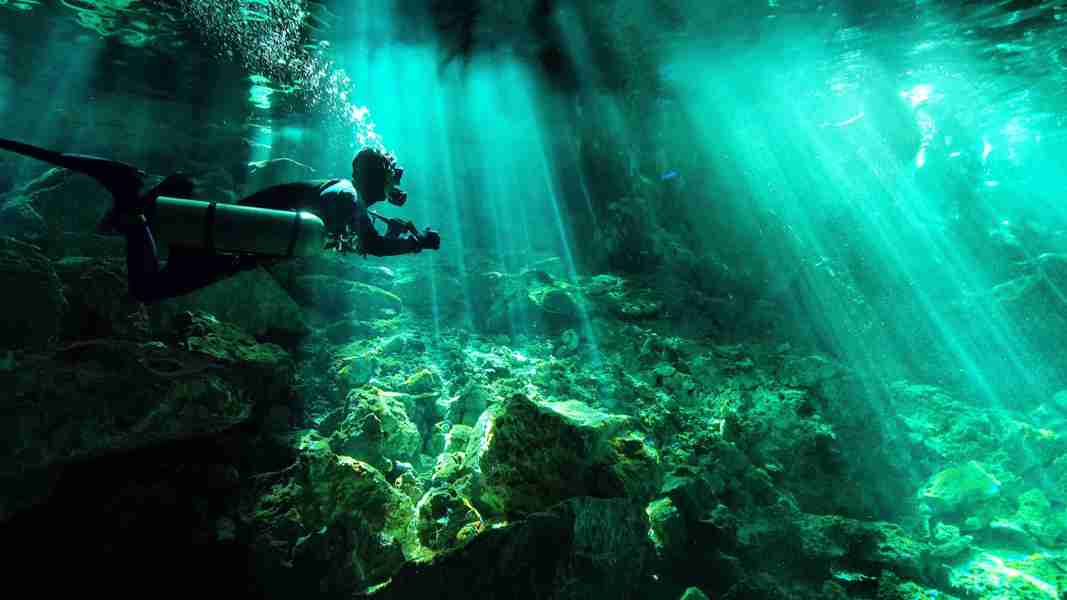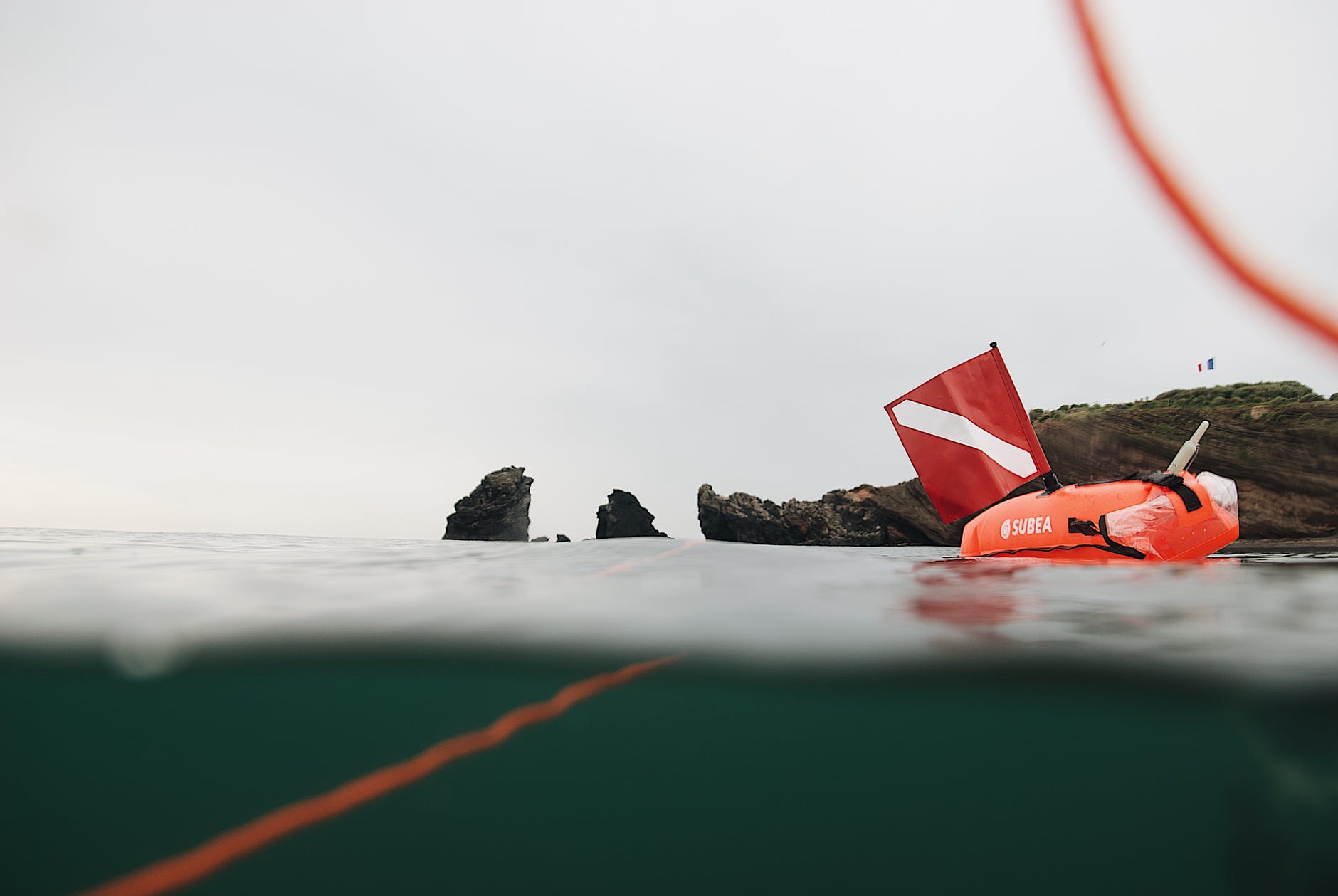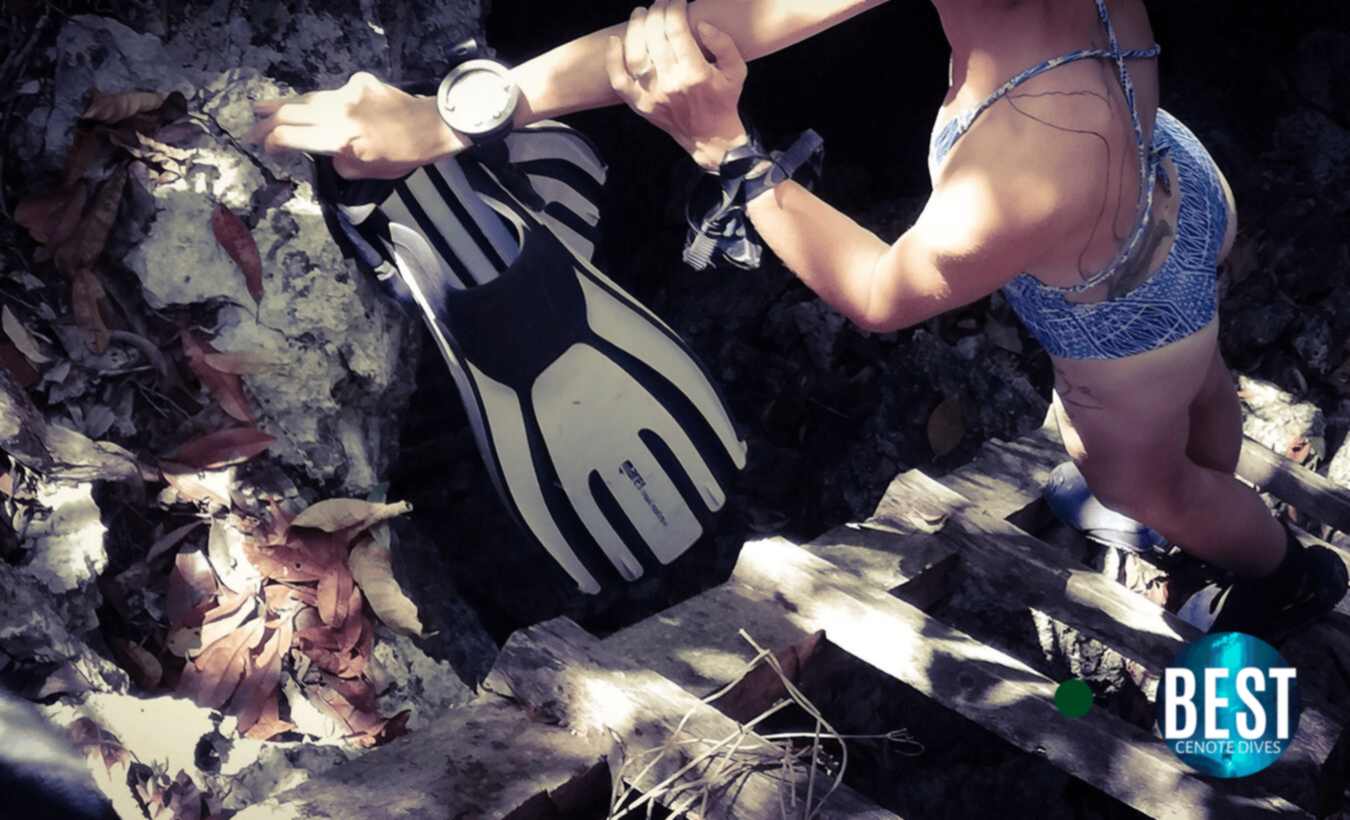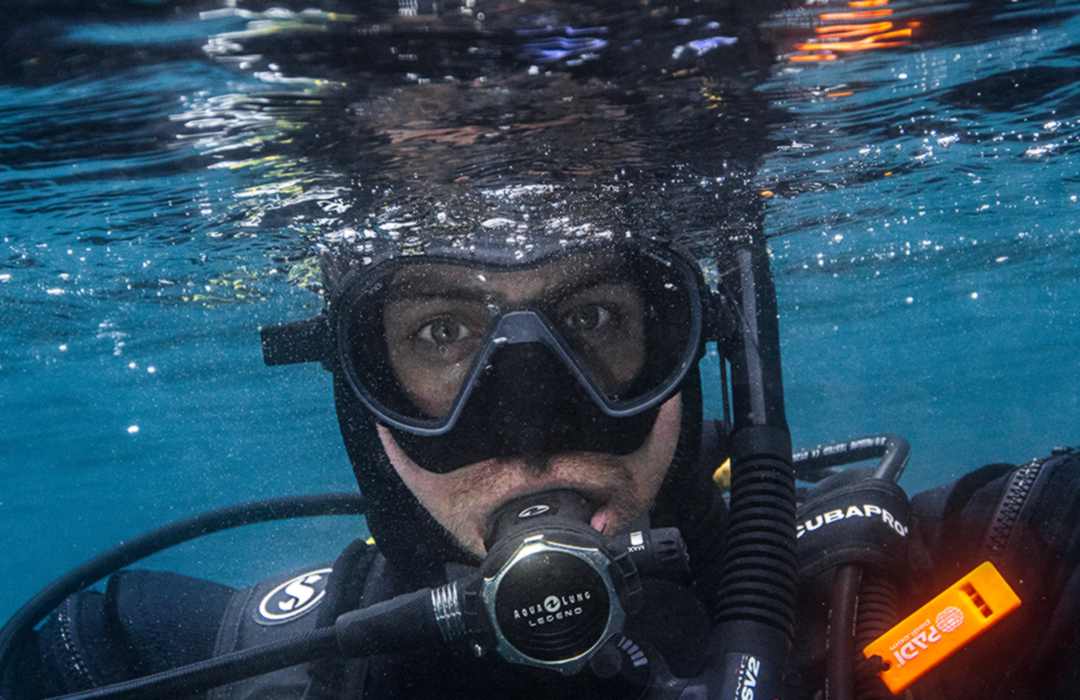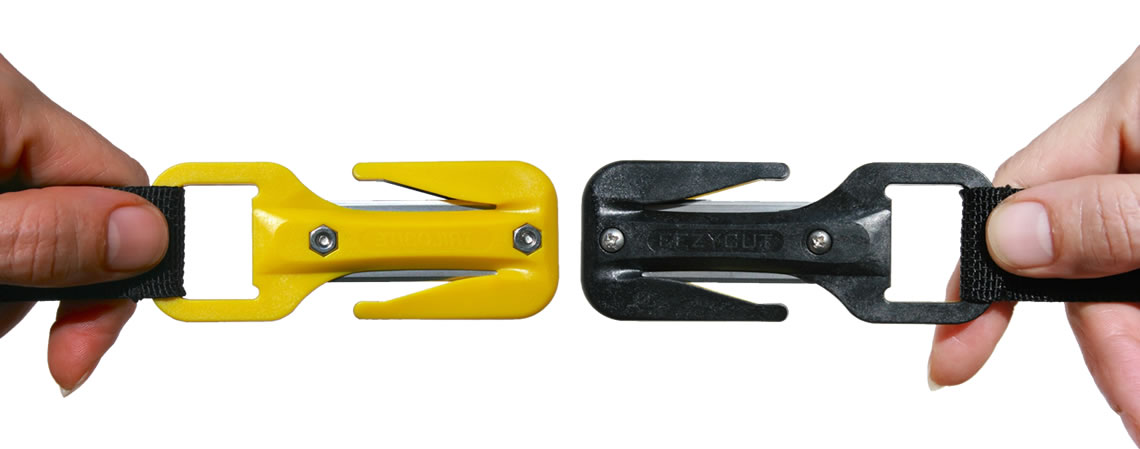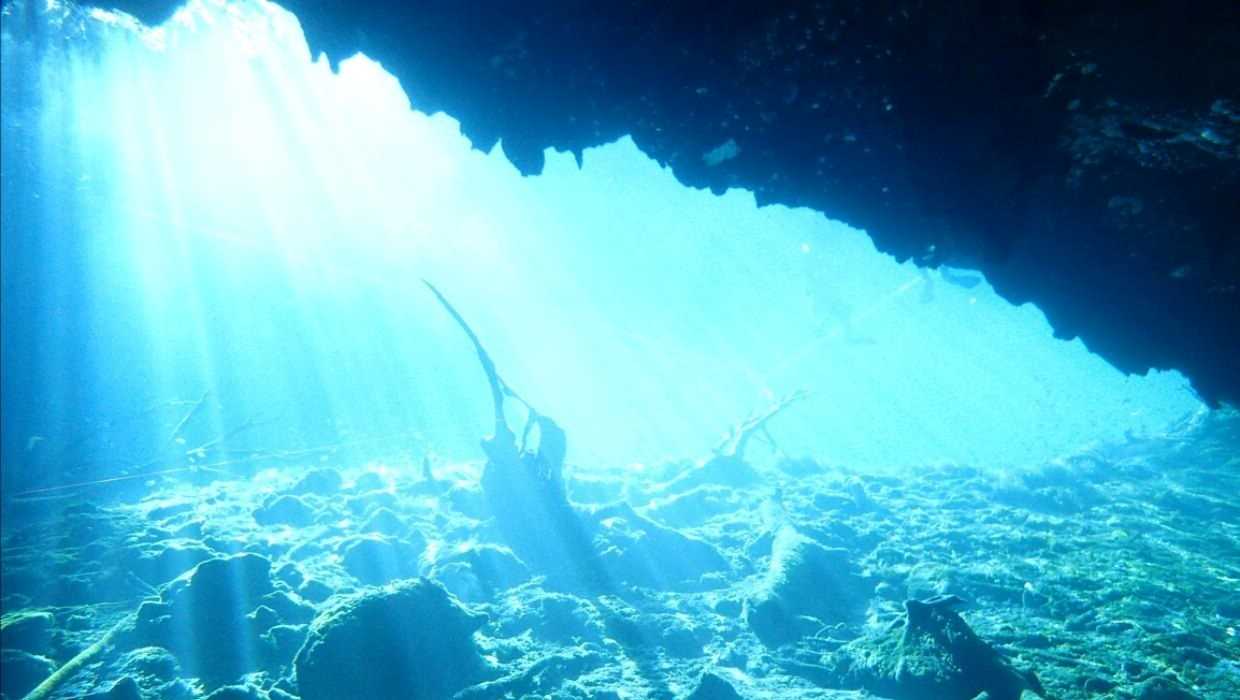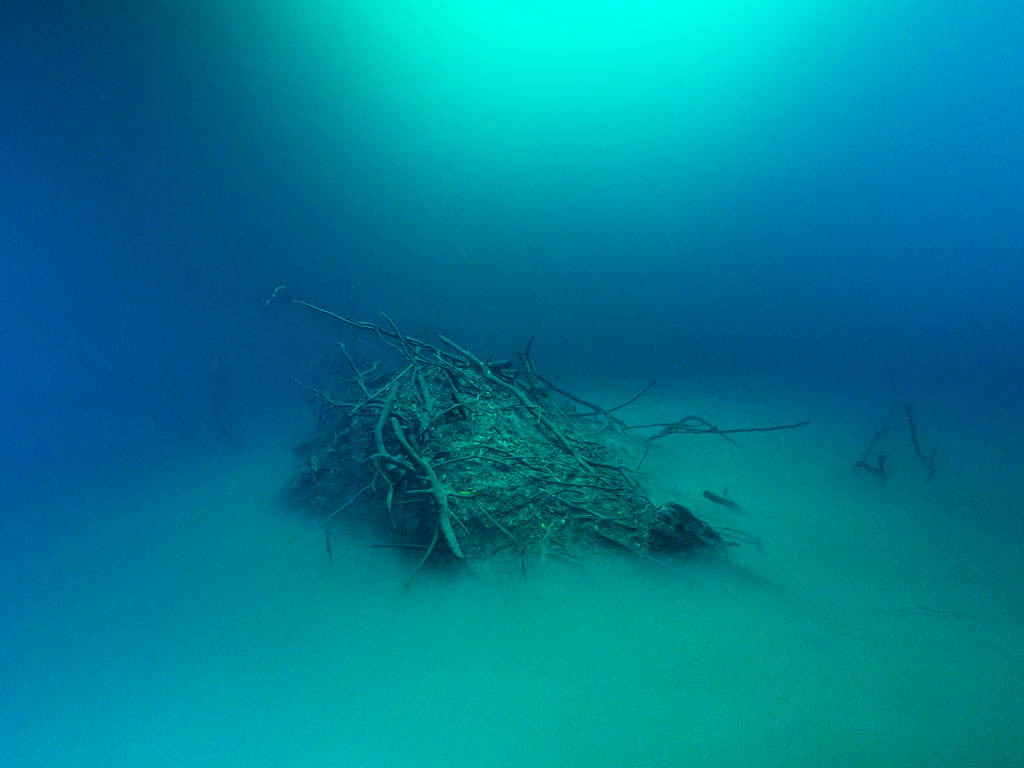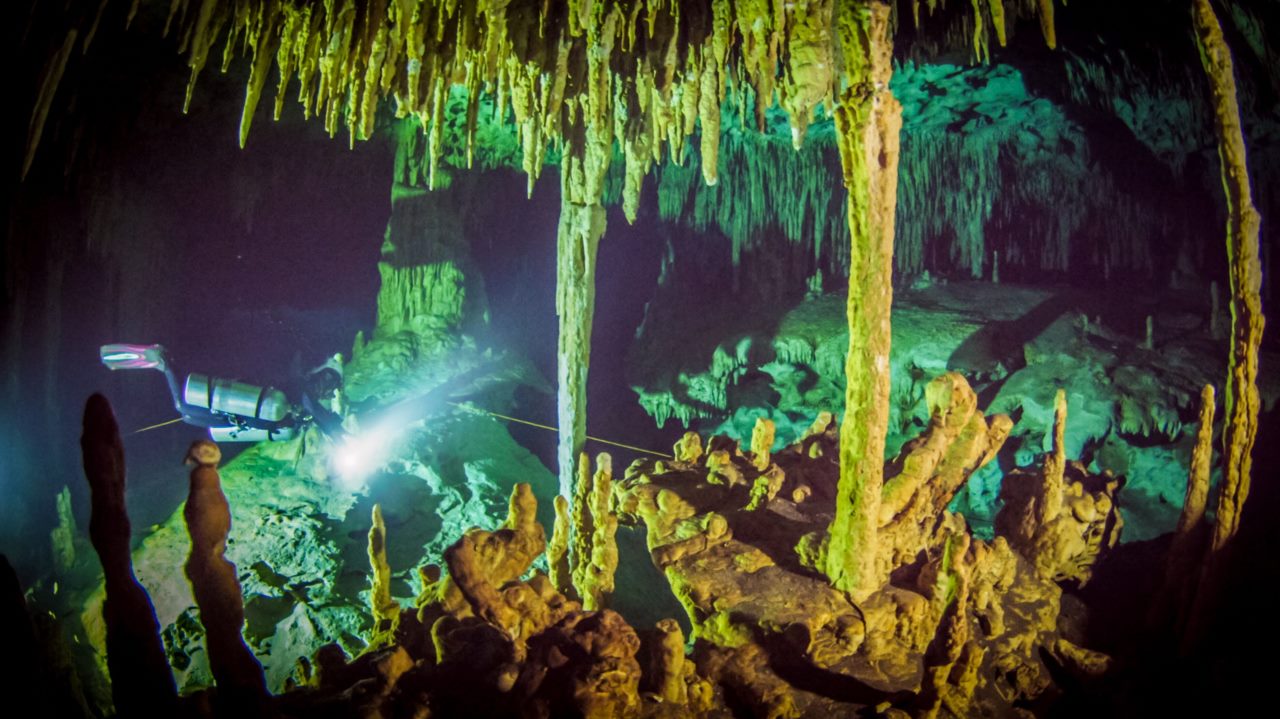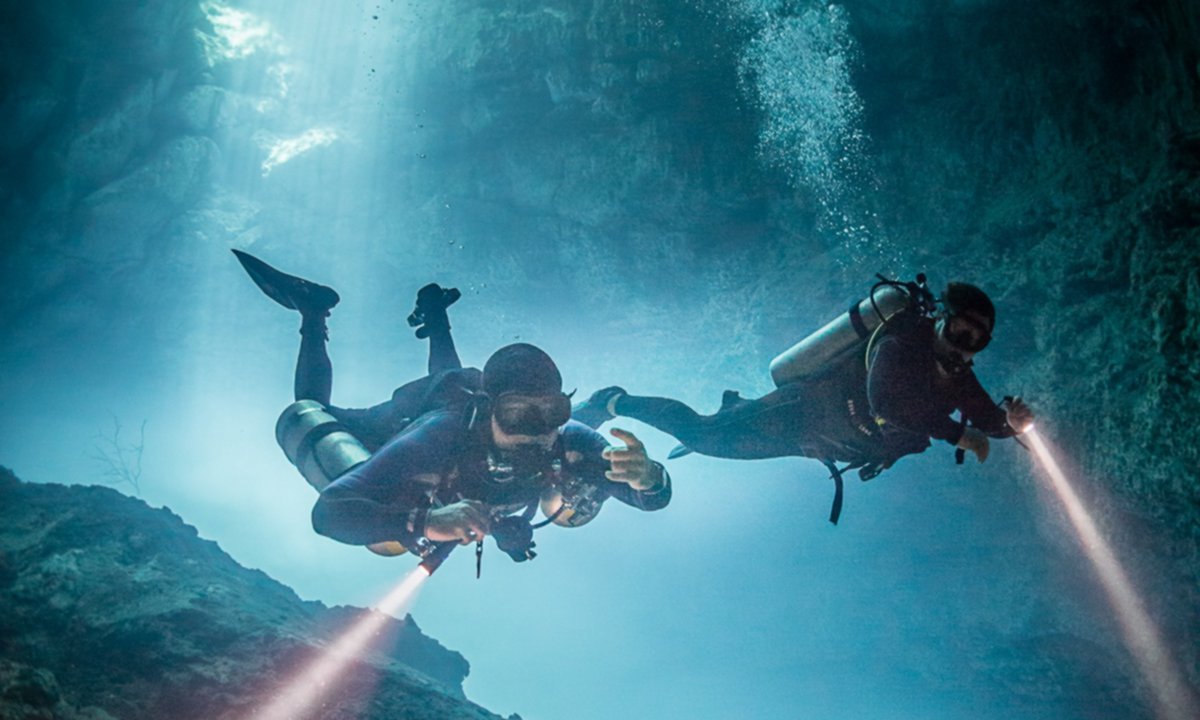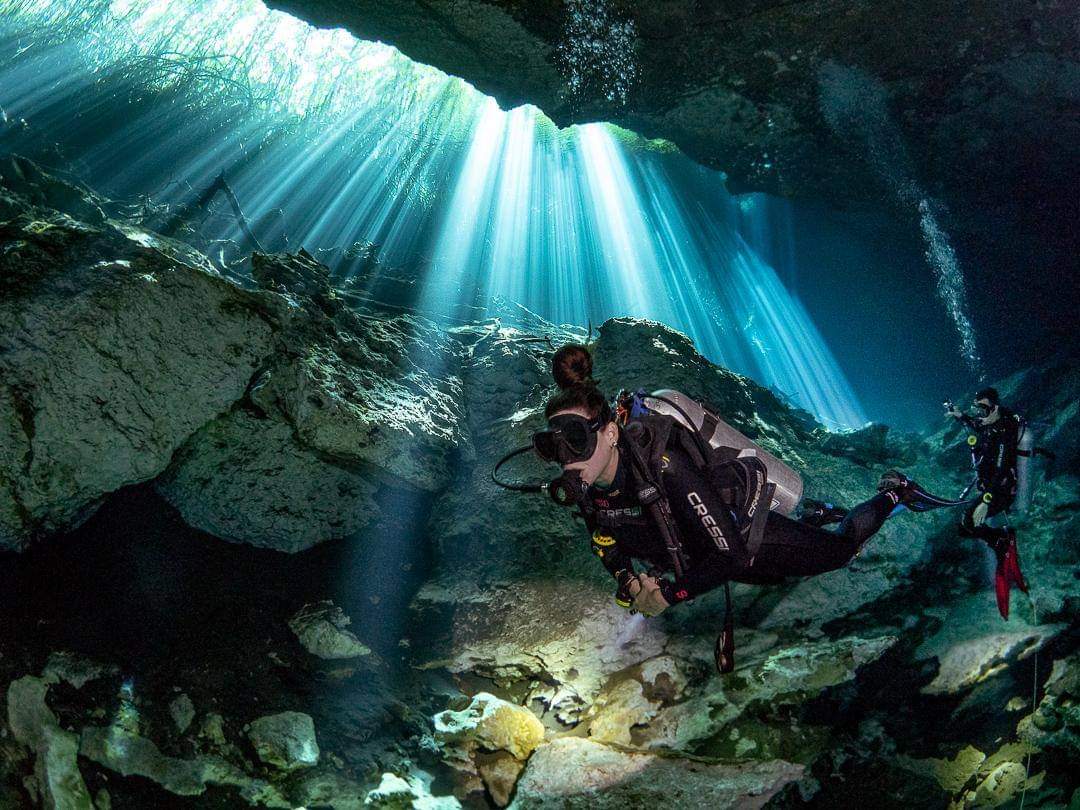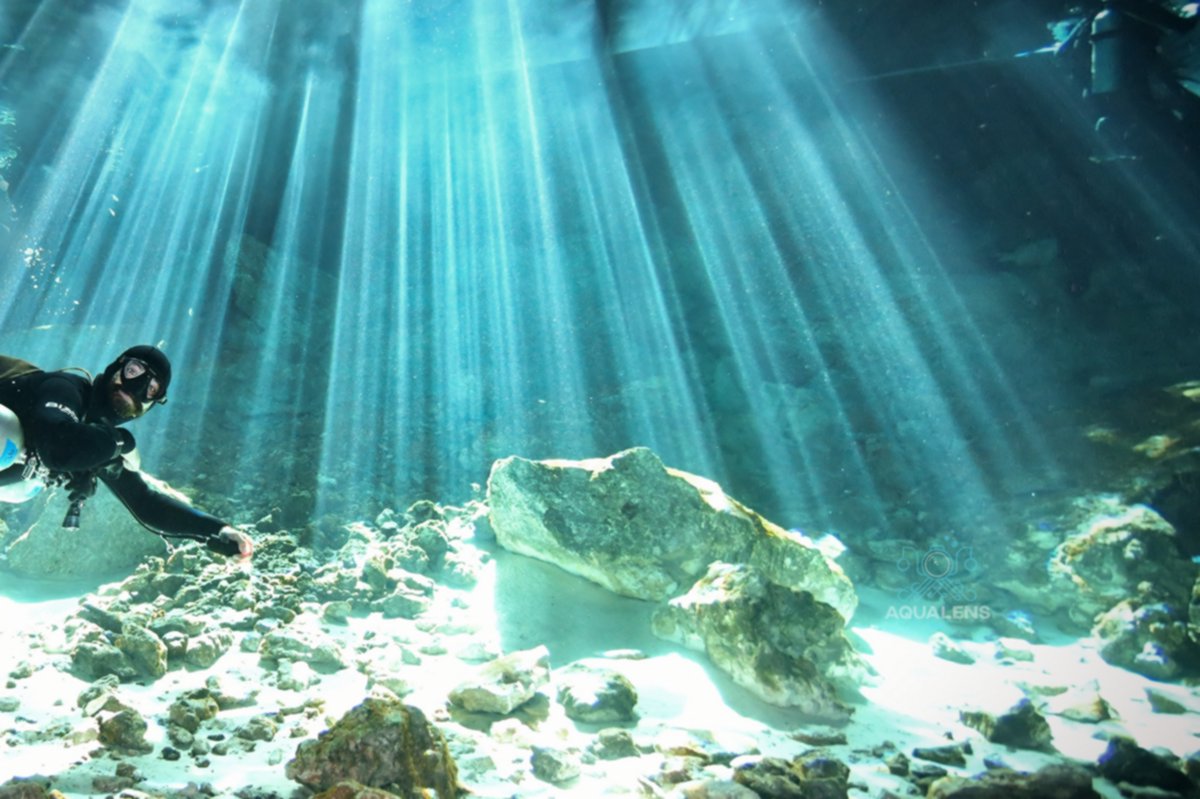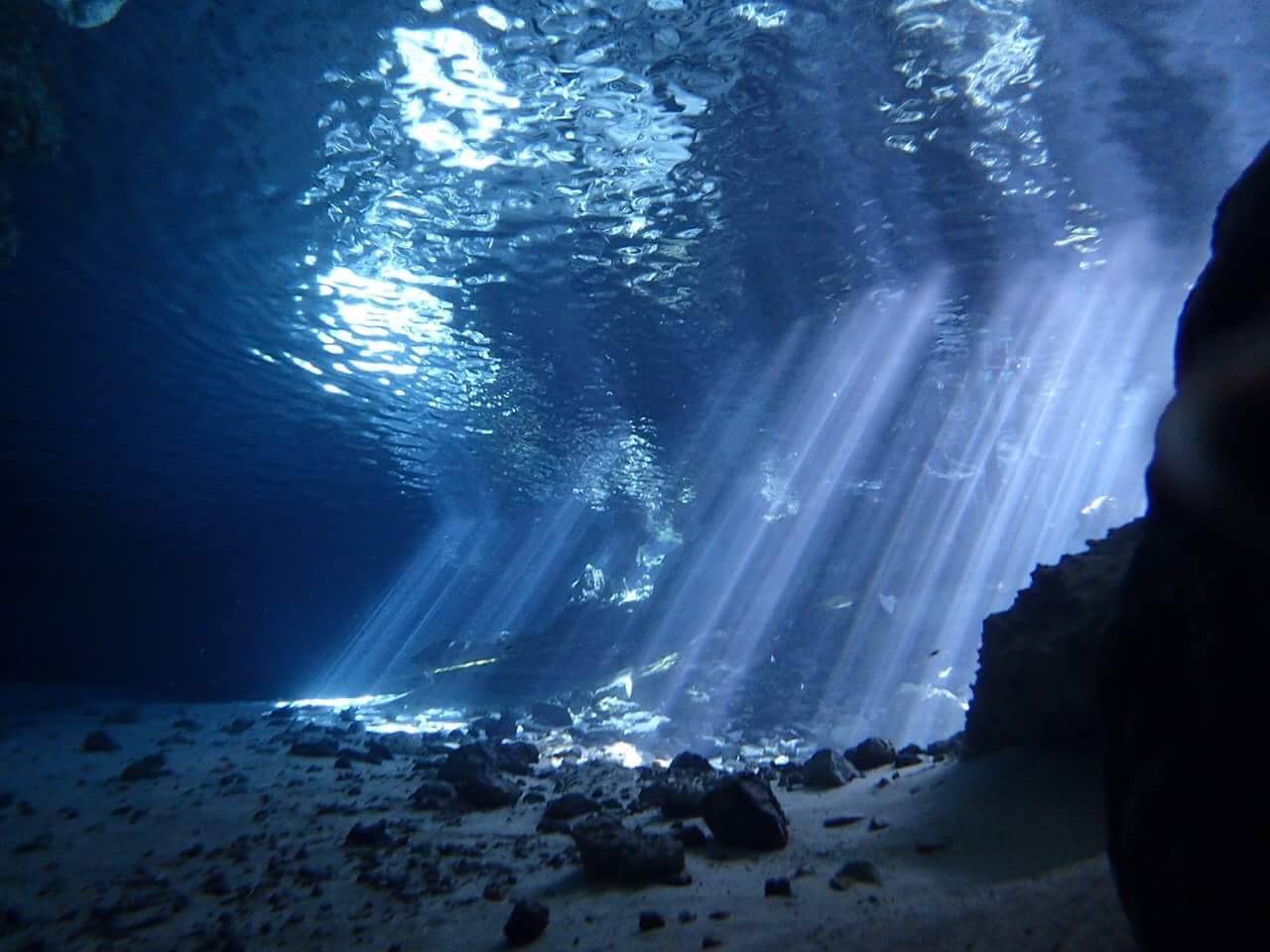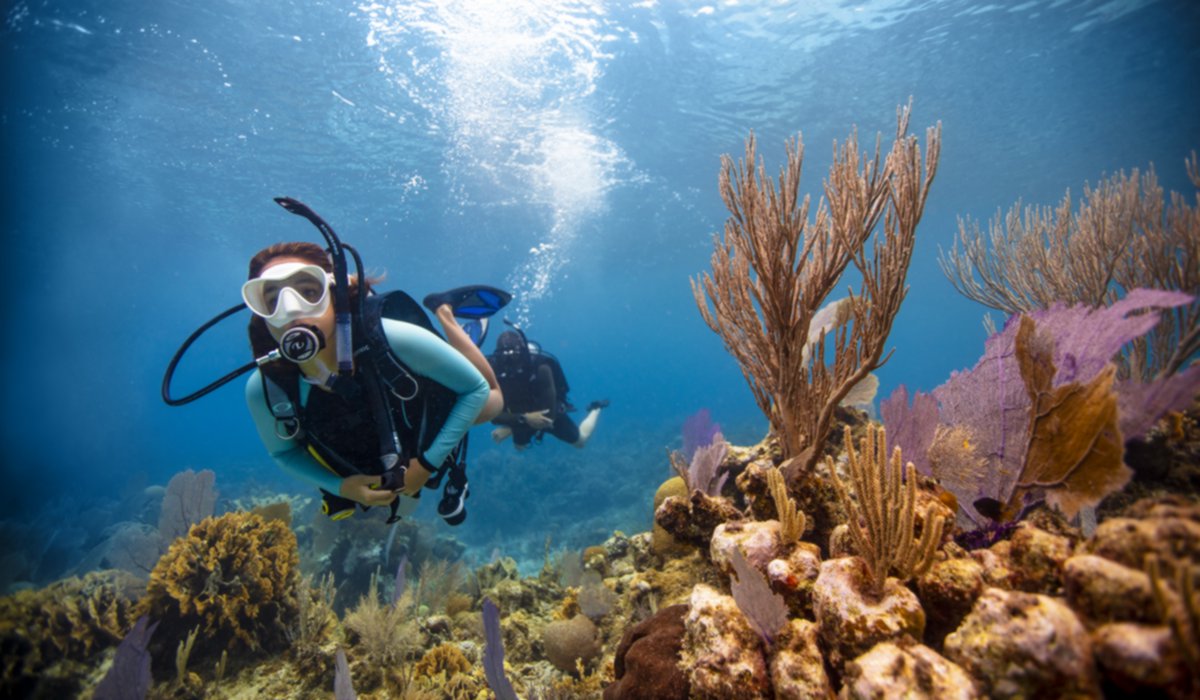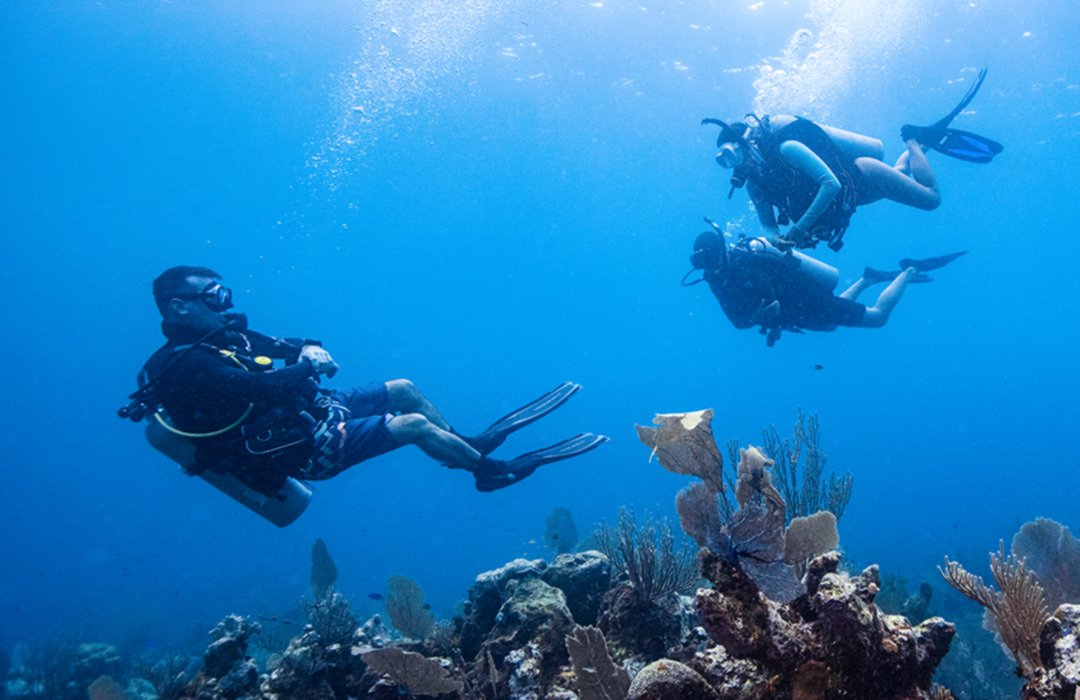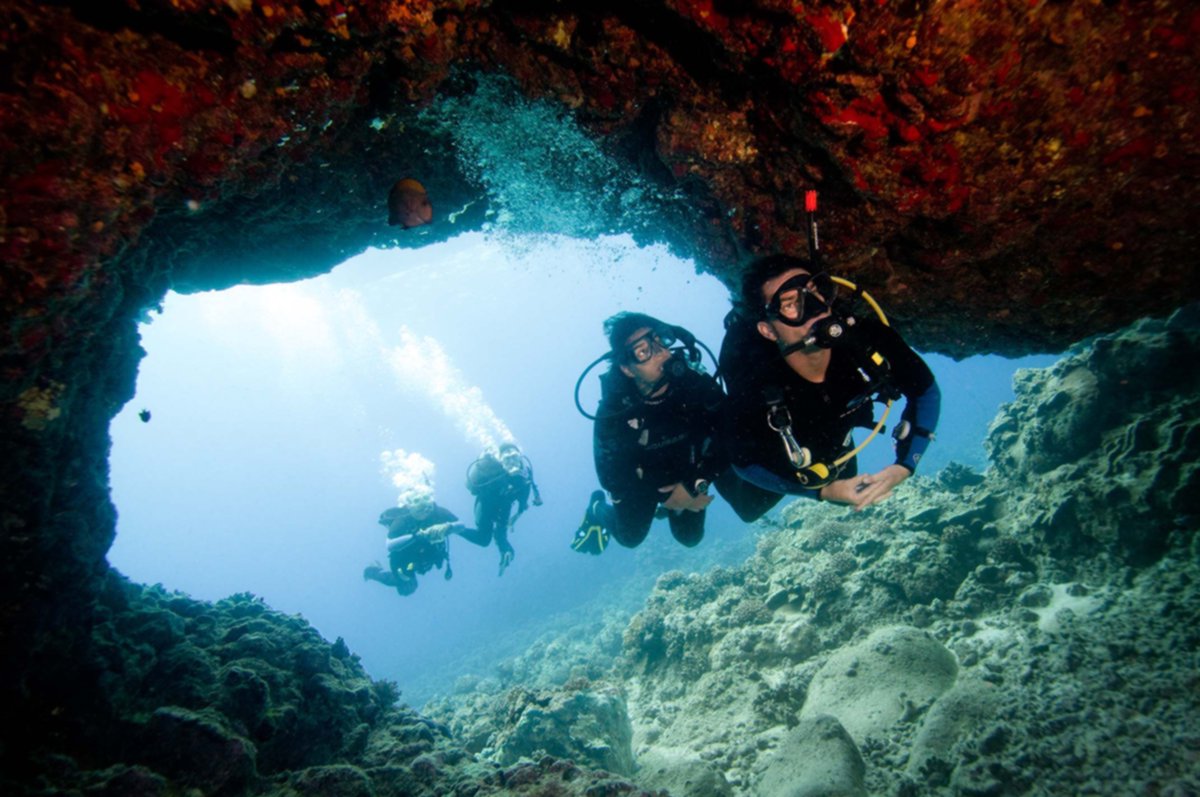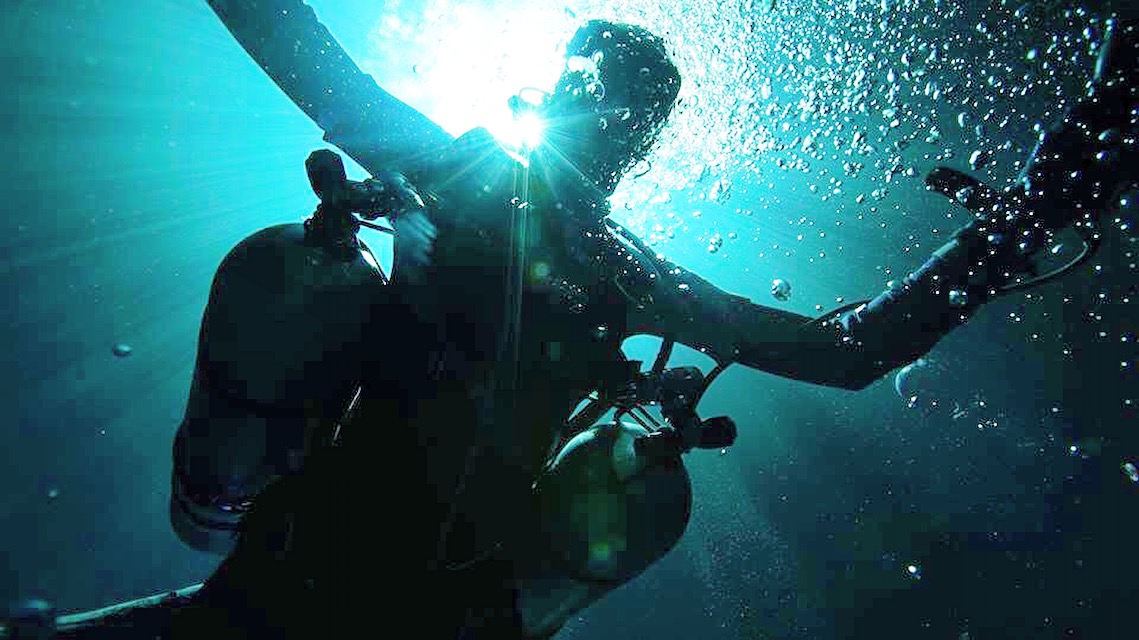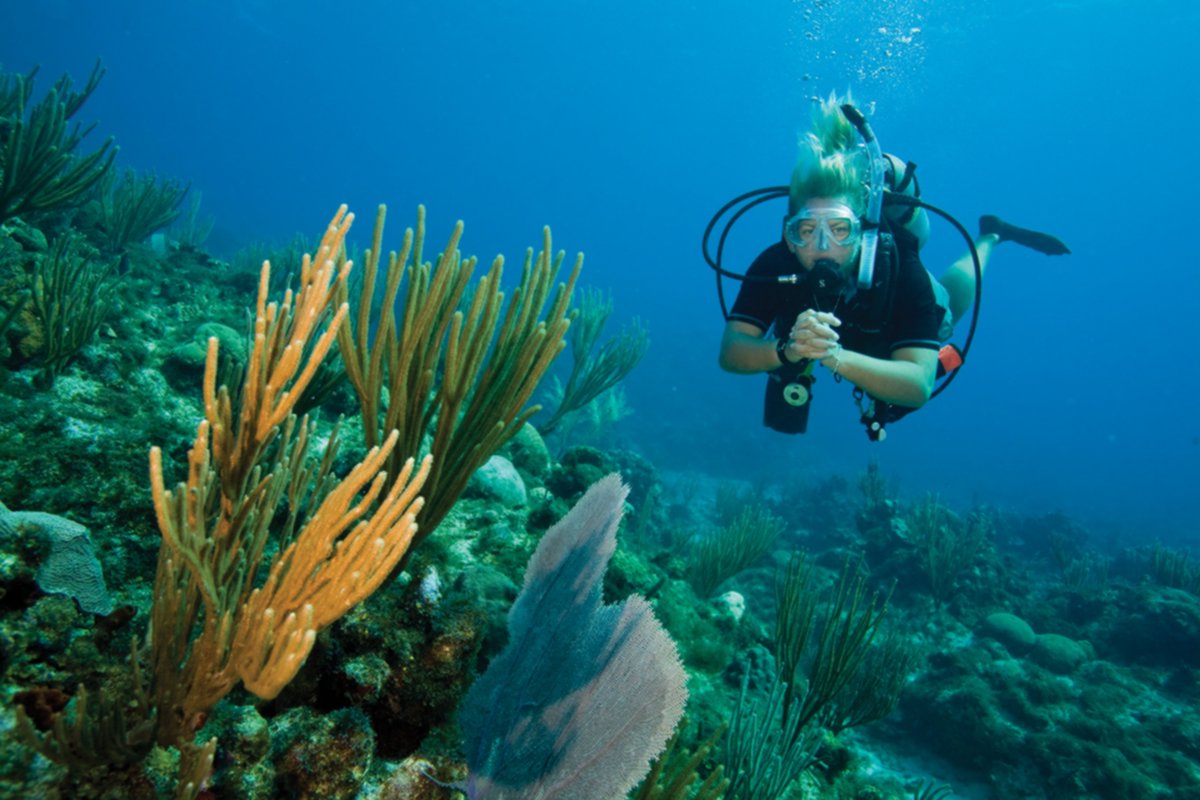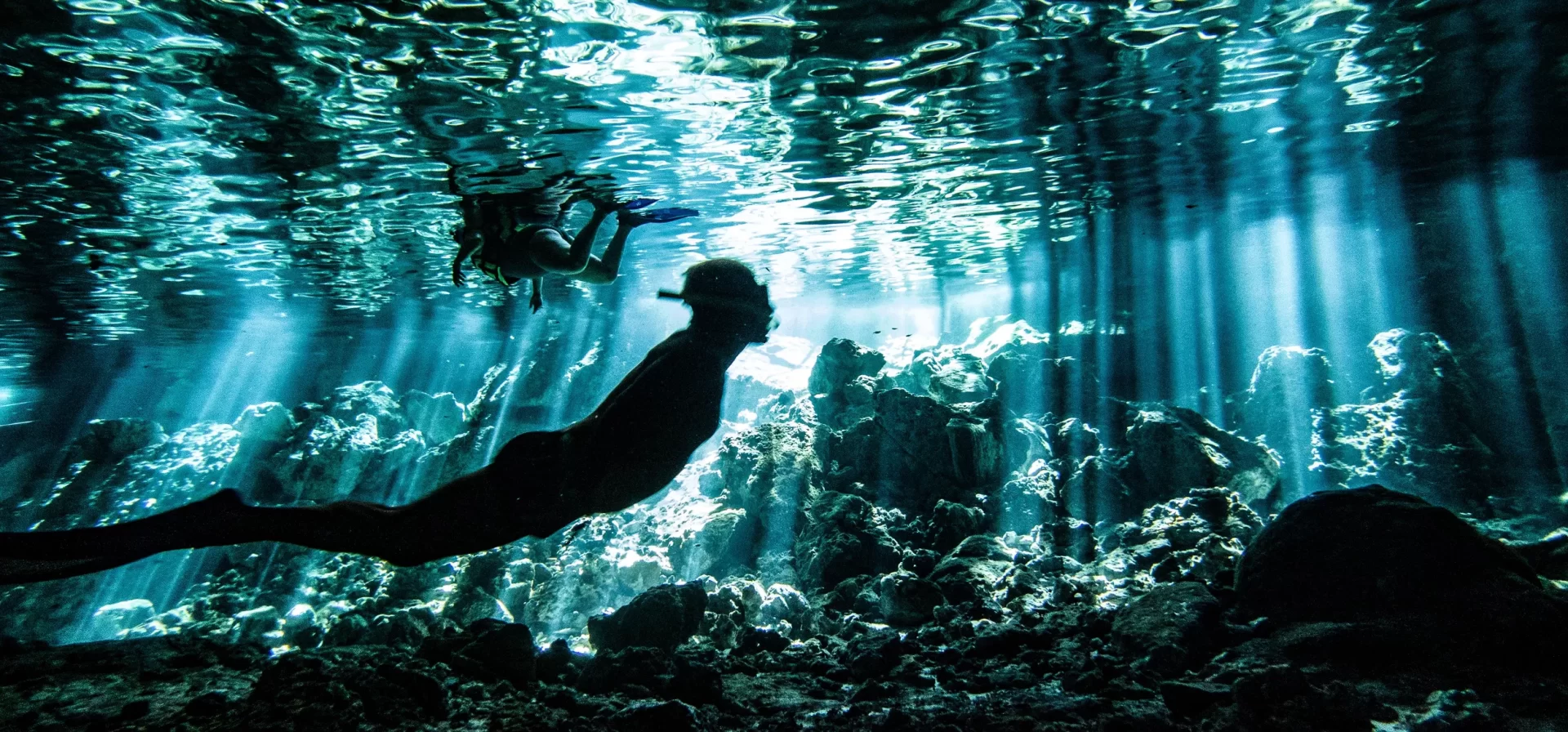Why Are There So Many Cenotes in Mexico?
Cenotes are natural sinkholes formed by the slow erosion of limestone rock. The Yucatán Peninsula is home to over 6,000 cenotes, making it the cenote capital of the world. But why are there so many here?
The Science Behind Cenote Formation
✔ The Yucatán Peninsula is made of porous limestone, which allows rainwater to seep through, slowly dissolving the rock over thousands of years.
✔ Over time, underground rivers carved vast cave systems beneath the surface.
✔ When cave roofs became too thin, they collapsed, creating cenotes—natural access points to the underground water system known as the Great Mayan Aquifer.
Cenotes Are Mexico’s Underground Water Veins
Cenotes and their vast cave systems transport fresh water beneath the jungle, much like the veins of the Earth, filtering rainwater and nourishing the lush forests above. Without cenotes, there would be no freshwater in the Yucatán!
What Created Cenotes?
Cenotes are created when cave passageways become so large that the roof collapses. Most cenotes have a round opening, with a pile of fallen rocks in the middle and clear water surrounding it.
But this process didn’t happen overnight—it took millions of years of geological changes, rising and falling sea levels, and one major cosmic event…
☄️ The Meteor That Changed Everything
66 million years ago, a 10-kilometer-wide asteroid crashed into the Yucatán Peninsula, creating the Chicxulub Crater. This impact:
✔ Shattered the limestone bedrock, creating fractures that allowed water to flow underground.
✔ Triggered global climate change, wiping out the dinosaurs and leading to extreme ice ages.
✔ Helped shape the underground rivers, setting the foundation for cenote formation.
👉 The Yucatán’s cenotes are a direct result of the same impact that ended the dinosaurs!
How Were Cenotes Formed? A Step-by-Step Breakdown
1️⃣ Millions of Years Ago – Limestone Formation
- The Yucatán Peninsula was once a shallow sea, covered by coral reefs and marine life.
- Over time, dead coral, shells, and marine creatures compacted, forming a thick layer of limestone rock.
2️⃣ The Meteor Impact (66 Million Years Ago)
- The Chicxulub asteroid impact shattered the limestone, creating cracks and fissures in the Earth’s crust.
- These fractures allowed rainwater to seep deep underground, forming the Great Mayan Aquifer.
3️⃣ Ice Ages & Underground River Formation
- Over millions of years, acidic rainwater dissolved the limestone, creating massive underground caves and tunnels.
- During ice ages, when sea levels were low, these caves remained dry, allowing stalactites and stalagmites to form.
4️⃣ Cave Collapse & Cenote Creation
- As sea levels rose and fell, underground caves flooded and emptied multiple times.
- The cave ceilings weakened over time and eventually collapsed, creating cenotes.
- Water from the Great Mayan Aquifer filled the cenotes, making them oases of crystal-clear freshwater.
👉 Cenotes are essentially “windows” into the world’s largest underground river system!
What Are the Different Types of Cenotes?
Cenotes are classified based on their age and formation stage:
| Cenote Type | Formation Stage | Example |
|---|---|---|
| Open Cenote | Fully collapsed, like a natural swimming pool | Cenote Azul |
| Semi-Open Cenote | Partially collapsed, with both open-air and cave sections | Cenote Dos Ojos |
| Cave Cenote | Entirely enclosed, accessible through a cavern entrance | Cenote El Pit |
| Collapsed Cenote | A cenote that has eroded into a lagoon | Laguna Bacalar |
Each type of cenote offers a unique experience, from swimming and snorkeling to cave diving deep into the Earth’s hidden world.
What Does “Cenote” Mean?
The word cenote comes from the Maya term “Tzonot,” meaning “sacred well”. The ancient Maya saw cenotes as portals to Xibalba—the underworld.
In English, a cenote is also called a “sinkhole,” but the term doesn’t fully capture their beauty and cultural importance.
Why Were Cenotes Important to the Maya?
For the Maya civilization, cenotes were the source of life and the entrance to the afterlife.
✔ Freshwater Supply: With no rivers in the Yucatán, cenotes provided the only drinking water.
✔ Sacred Ritual Sites: The Maya made offerings to Chaac, the rain god, in cenotes.
✔ Human Sacrifices: Archaeological evidence suggests some cenotes were used for ceremonial sacrifices.
✔ Burial Grounds: Some cenotes contained Maya artifacts, pottery, and human remains.
👉 The famous Sacred Cenote at Chichén Itzá is one of the best examples of a cenote used in Maya rituals.
What Can You See Inside a Cenote?
Cenotes are time capsules preserving ancient fossils and formations:
✔ Fossils of prehistoric marine life – Proof that the Yucatán was once under the sea.
✔ Stalactites & Stalagmites – These formations only grow in dry caves, proving sea levels were lower in the past.
✔ Haloclines – A visible mix of freshwater and saltwater found in deep cenotes like El Pit.
✔ Blind Cave Fish & Unique Aquatic Life – Some cenotes have fish that evolved to live without eyesight!
Best Cenotes in Mexico for Diving & Snorkeling
| Cenote | Location | Best For |
|---|---|---|
| Gran Cenote | Tulum | Snorkeling |
| Dos Ojos | Tulum | Cavern Diving & Snorkeling |
| El Pit | Tulum | Deep Diving |
| Cenote Angelita | Tulum | Underwater Hydrogen Sulfide Cloud |
| Cenote Azul | Playa del Carmen | Open Cenote Swimming |
| Cenote Ik Kil | Chichen Itza | Touristic Open Cenote |
| Cenote Calavera | Tulum | The “Temple of Doom” Cave Diving |
| Cenote Car Wash | Tulum | Cavern Diving & Photography |
Each cenote offers something unique—whether it’s swimming in open cenotes, snorkeling with fish, or diving into deep caverns.
Experience the Magic of Mexico’s Cenotes
Whether you’re interested in cenote diving, snorkeling, or learning about their ancient history, the cenotes of Mexico are a must-visit natural wonder.
👉 Book a Cenote Adventure Today
📩 Have questions? Contact Us
Cenote Diving & Snorkeling – What to Expect
Snorkeling in Cenotes
✔ No experience needed—just bring a mask and swim!
✔ Crystal-clear water with over 100m visibility.
✔ See stalactites, fish, and turtle life up close.
👉 Book a Cenote Snorkeling Tour
Cenote Diving (For Certified Divers)
✔ Explore hidden caverns with amazing rock formations.
✔ Swim through haloclines where freshwater and saltwater mix.
✔ Visit ancient fossilized coral formations inside the caves.
👉 Book a Cenote Diving Adventure
Cave Diving
✔ Go beyond the light zone into the deep underground tunnels.
✔ Follow permanent guide lines through spectacular passageways.
✔ Experience the thrill of true cave exploration.
FAQs About Cenotes
1. Can anyone swim in a cenote?
Yes! Most cenotes are perfect for swimming and snorkeling, even if you’re not a diver.
2. How deep are cenotes?
Cenote depths range from shallow pools (2-5m) to deep sinkholes over 100m (like El Pit).
3. Do cenotes have fish?
Yes! Many cenotes have small fish, turtles, and even blind cave fish.
4. Are cenotes safe?
Yes, but it’s important to respect the environment—wear no sunscreen, be mindful of slippery rocks, and always dive with a guide if entering caves.
